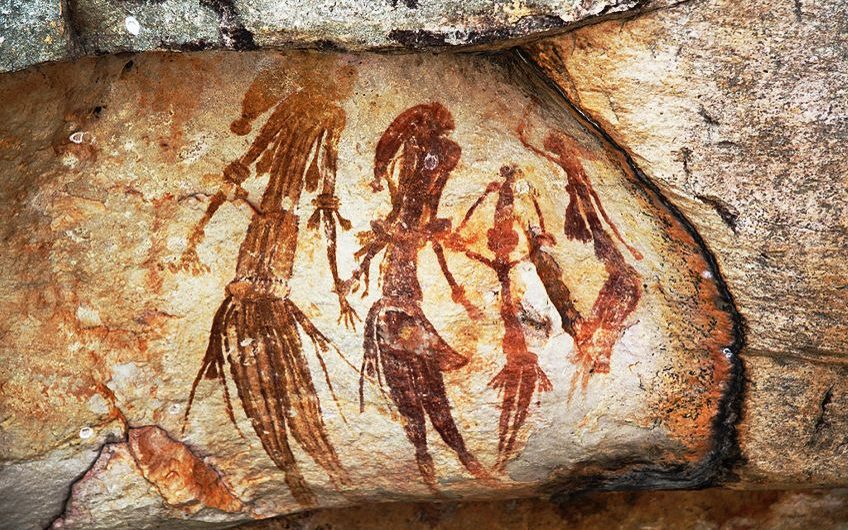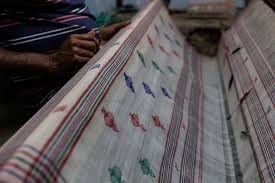About Paleolithic Period
- It was the period ranging from 2.6 million years ago to 10,000 years ago.
- The name Paleolithic was coined by the famous archeologist John Lubbock in the year 1865.
- It began with the first use of stone tools by hominins (human-like creatures) and ended with the onset of the Mesolithic Period around 11,650 years ago.
- It has been classified into upper, middle, and lower Paleolithic periods due to the growth that was experienced by the human species over time.
- Lower or Early Palaeolithic: From 2.6 million-250,000 years ago,simple pebble tools and crude stone choppers were made by the earliest humans.
- Middle Palaeolithic: From 250,000 years ago, with a new focus on flake-tools, which continued to be popular in certain areas until as late as c. 30,000 years ago.
- Upper or Late Palaeolithic (40,000–10,000 BC): It saw a huge proliferation with regard to both tool shapes and source materials (now also a lot of bone, antler, and ivory).
Social Organisation:
- The human societies of the Paleolithic age are recorded to have lived without any form of organized state or government.
- Palaeolithic is also more generally associated with the cultures and lifestyles of the hunter-gatherers.
- Middle and upper Paleolithic human societies lived together in groups of 25-100 members, and they were nomads.
- At the end of the Paleolithic age, families started to settle downto cultivate land and trade with neighbors.
Religions and Beliefs:
- The development of any form of spiritual or religious belief in human evolution started during the Paleolithic age.
- The middle Paleolithic human species created burial sites, and defleshing rituals led anthropologists and archaeologists to conclude thatthey believed in an afterlife.
Key Facts about Mesolithic Period:
- It is also called the Middle Stone Age which existed between the Paleolithic (Old Stone Age) and the Neolithic (New Stone Age).
- Timeframe: This period is generally considered to have occurred between approximately 12,000-10,000 years ago.
- Lifestyle: During the Mesolithic period, human societies were predominantly hunter-gatherer communities.
- People relied on hunting, fishing, and gathering wild plant resources for their sustenance.
- Stone tools found during this period are generally tiny, and are called microliths.
- Microliths were probably stuck onto handles of bone or wood to make tools such as saws and sickles.
- At the same time, older varieties of tools continued to be in use.
Q1: What is the Neolithic age?
Neolithic, also called New Stone Age, final stage of cultural evolution or technological development among prehistoric humans. It was characterized by stone tools shaped by polishing or grinding, dependence on domesticated plants or animals, settlement in permanent villages, and the appearance of such crafts as pottery and weaving. The Neolithic followed the Paleolithic Period, or age of chipped-stone tools, and preceded the Bronze Age, or early period of metal tools.
Source: Largest Paleolithic Cave Art Site Is Discovered in Eastern Iberia
Last updated on December, 2025
→ Check out the latest UPSC Syllabus 2026 here.
→ Join Vajiram & Ravi’s Interview Guidance Programme for expert help to crack your final UPSC stage.
→ UPSC Mains Result 2025 is now out.
→ UPSC Notification 2026 is scheduled to be released on January 14, 2026.
→ UPSC Calendar 2026 is released on 15th May, 2025.
→ The UPSC Vacancy 2025 were released 1129, out of which 979 were for UPSC CSE and remaining 150 are for UPSC IFoS.
→ UPSC Prelims 2026 will be conducted on 24th May, 2026 & UPSC Mains 2026 will be conducted on 21st August 2026.
→ The UPSC Selection Process is of 3 stages-Prelims, Mains and Interview.
→ UPSC Result 2024 is released with latest UPSC Marksheet 2024. Check Now!
→ UPSC Prelims Result 2025 is out now for the CSE held on 25 May 2025.
→ UPSC Toppers List 2024 is released now. Shakti Dubey is UPSC AIR 1 2024 Topper.
→ UPSC Prelims Question Paper 2025 and Unofficial Prelims Answer Key 2025 are available now.
→ UPSC Mains Question Paper 2025 is out for Essay, GS 1, 2, 3 & GS 4.
→ UPSC Mains Indian Language Question Paper 2025 is now out.
→ UPSC Mains Optional Question Paper 2025 is now out.
→ Also check Best IAS Coaching in Delhi

















